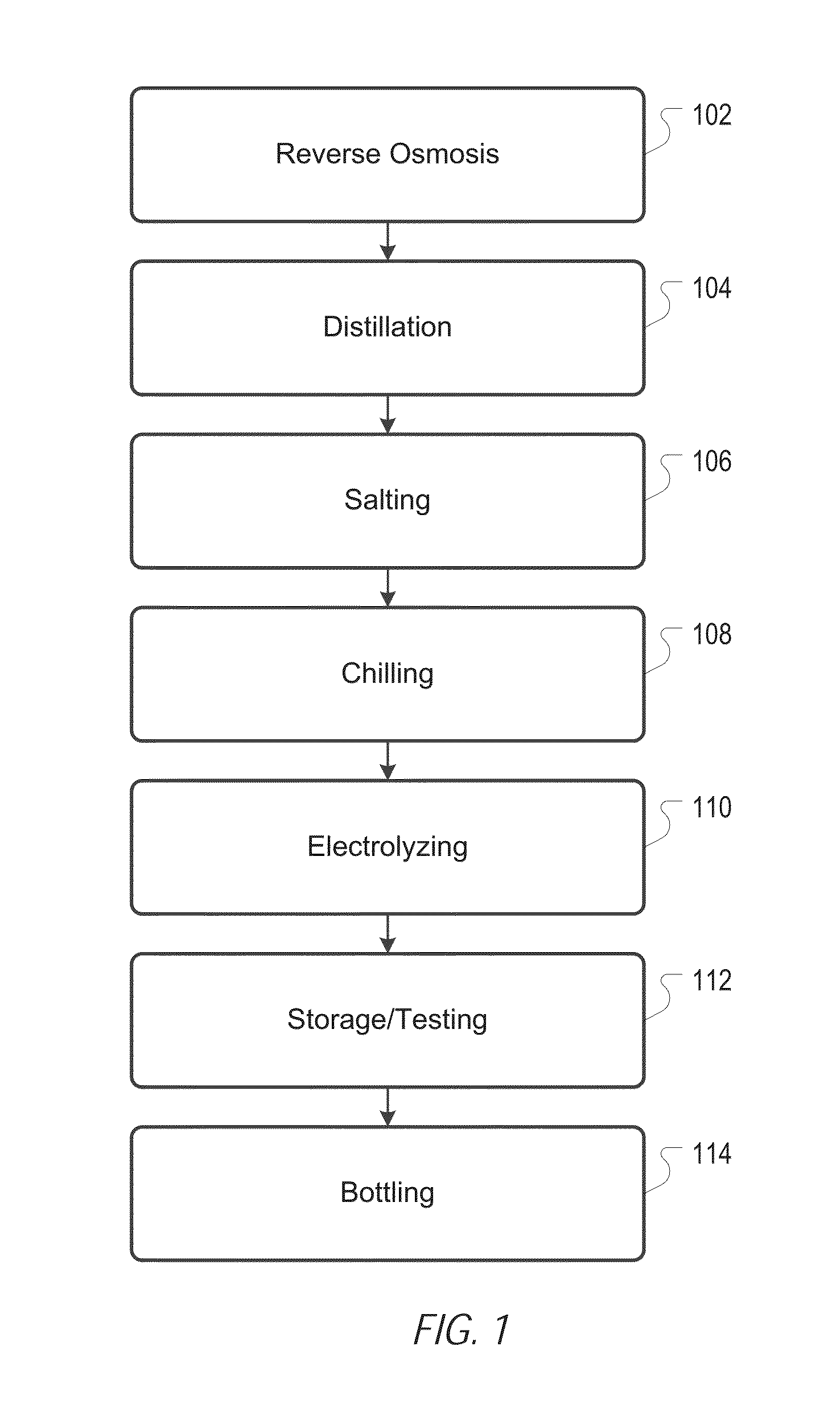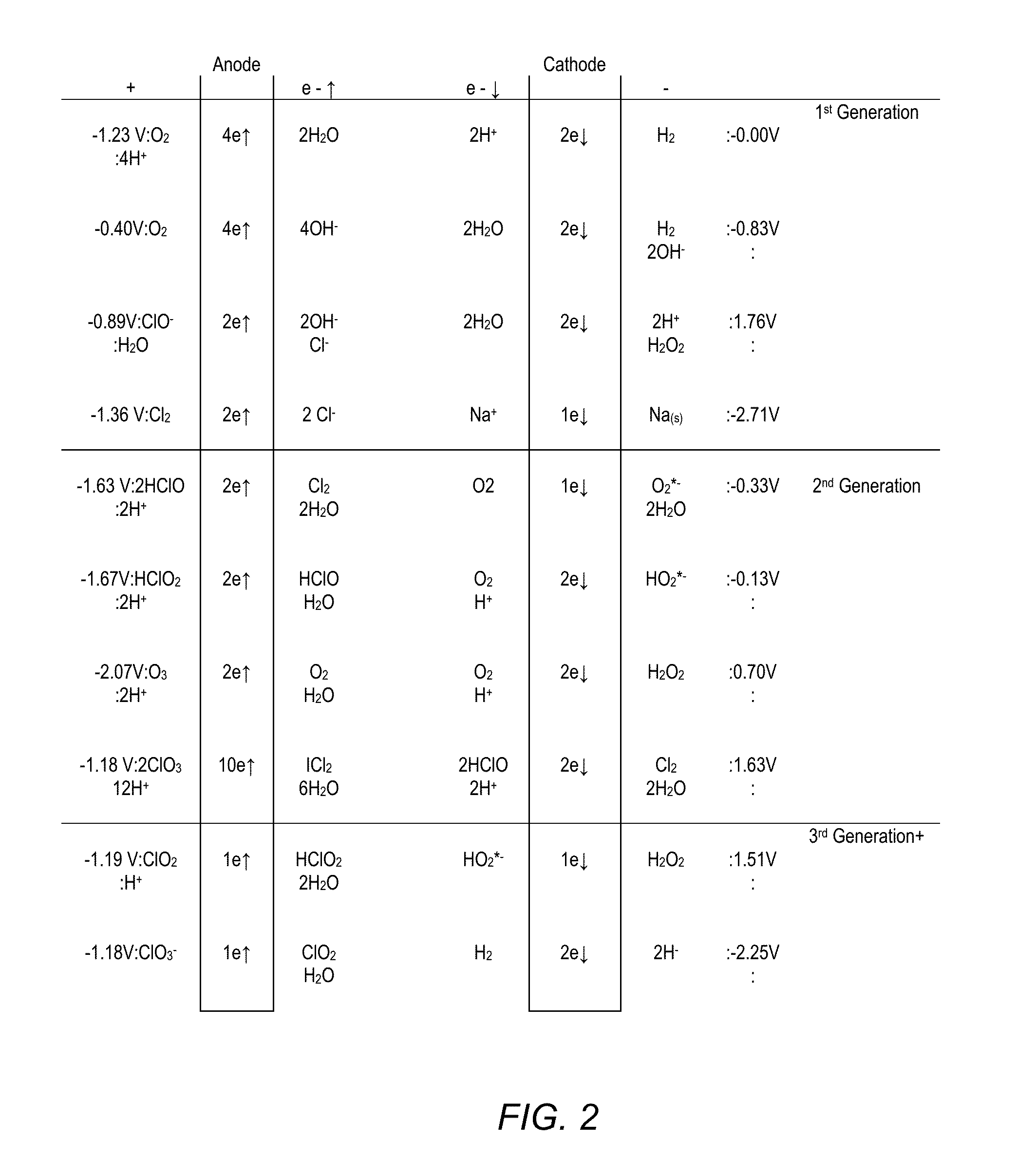Methods and Systems for Improving Plant Health
a plant health and health technology, applied in the field of methods and systems for improving plant health, can solve the problems of lack of water or nutrients, different stresses of plants, limitations, etc., and achieve the effects of improving plant health, crop production/productivity, and improving plant health
- Summary
- Abstract
- Description
- Claims
- Application Information
AI Technical Summary
Benefits of technology
Problems solved by technology
Method used
Image
Examples
example 1
[0177]FIG. 3 illustrates a plan view of a process and system for producing a composition according to the present description. One skilled in the art understands that changes can be made to the system to alter the composition, and these changes are within the scope of the present description.
[0178]Incoming water 202 can be subjected to reverse osmosis system 204 at a temperature of about 15-20° C. to achieve purified water 206 with about 8 ppm of total dissolved solids. Purified water 206, is then fed at a temperature of about 15-20° C. into distiller 208 and processed to achieve distilled water 210 with about 0.5 ppm of total dissolved solids. Distilled water 210 can then be stored in tank 212.
[0179]FIG. 4 illustrates an example system for preparing water for further processing into a therapeutic composition. System 300 can include a water source 302 which can feed directly into a carbon filter 304. After oils, alcohols, and other volatile chemical residuals and particulates are re...
example 2
Characterization of a Solution Produced as Described in Example 1
[0197]A composition produced as described in Example 1 was analyzed using a variety of different characterization techniques. ICP / MS and 35Cl NMR were used to analyze and quantify chlorine content. Headspace mass spectrometry analysis was used to analyze adsorbed gas content in the composition. 1H NMR was used to verify the organic matter content in the composition. 31P NMR and EPR experiments utilizing spin trap molecules were used to explore the composition for free radicals.
[0198]The composition was received and stored at about 4° C. when not being used.
[0199]Chlorine NMR
[0200]Sodium hypochlorite solutions were prepared at different pH values. 5% sodium hypochlorite solution had a pH of 12.48. Concentrated nitric acid was added to 5% sodium hypochlorite solution to create solutions that were at pH of 9.99, 6.99, 5.32, and 3.28. These solutions were then analyzed by NMR spectroscopy. The composition had a measured pH...
example 3
[0234]The electrolyzed fluid can be made in different types of vessels as long as the proper power sourced is used. One example of an apparatus that was used to make electrolyzed solution for treating fungal infections is that referred to in FIGS. 14-18.
[0235]Referring first to FIG. 14, which is a perspective view of a first presently preferred embodiment of the present disclosure generally represented at 100, includes a power supply 102 and a fluid receptacle represented at 104. The fluid receptacle 104 includes a base 114 upon which is attached a fluid vessel 116. The base 114 can preferably be fabricated from an insulative plastic material. The fluid vessel 116 is preferably fabricated from an inert clear plastic material which is compatible with biological processes as available in the art.
[0236]A lid 118 is provided to cover the fluid vessel 116 and keep contaminants out of the fluid vessel 116. A screen 120 is positioned to prevent foreign objects, which might accidentally fal...
PUM
 Login to View More
Login to View More Abstract
Description
Claims
Application Information
 Login to View More
Login to View More - R&D
- Intellectual Property
- Life Sciences
- Materials
- Tech Scout
- Unparalleled Data Quality
- Higher Quality Content
- 60% Fewer Hallucinations
Browse by: Latest US Patents, China's latest patents, Technical Efficacy Thesaurus, Application Domain, Technology Topic, Popular Technical Reports.
© 2025 PatSnap. All rights reserved.Legal|Privacy policy|Modern Slavery Act Transparency Statement|Sitemap|About US| Contact US: help@patsnap.com



